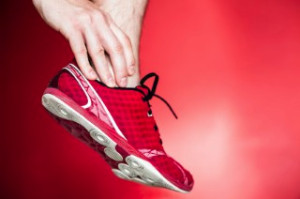
The feet and ankles absorb a lot of force when you run, and as a result, you may experience stiffness afterward. Ankle stiffness can limit the range of motion and make the ankle feel immobile. Studies show that as the speed of your run increases, so does the likelihood of ankle stiffness. In addition, the way you run can affect post-running stiffness. You are more likely to experience stiffness after a run if you have a rear-foot strike pattern, and less likely with a forefoot strike pattern. Certain underlying conditions can also contribute to ankle stiffness. Among them are a sprain, arthritis, or plantar fasciitis. If you believe you have an ankle injury, it is important to stop the activity and consult a chiropodist who can diagnose the problem and offer treatment solutions.
Ankle pain is a common symptom of many lower limb problems. If you are experiencing ankle pain, please consult with Chiropodist Stephanie Poupore from North Bay Foot & Ankle. Our clinician will assess your condition and provide you with quality foot and ankle treatment.
The ankle is composed of a number of muscles, bones, tendons, and ligaments. There are many conditions which may cause ankle pain.
Causes
-
Ankle strains or sprains
-
Achilles tendon injuries
-
Fractures
-
Bursitis
-
Arthritis
-
Gout
-
Tarsal tunnel syndrome
Symptoms
If you have ankle pain, you may also experience a variety of other symptoms depending on the underlying cause of the pain. Some of these symptoms may include ankle swelling, bruising, redness, numbness or tingling, instability, and difficulty walking.
Diagnosis
The underlying cause of ankle pain can be diagnosed by a chiropodist. Diagnoses are typically made based on your medical history, a physical examination of the affected ankle, and imaging studies such as X-rays.
Treatment
Treatment for your ankle pain will depend on its underlying cause. Often, the chiropodist will recommend that you rest the affected ankle. You might also need to ice, compress, and elevate the ankle, wear an orthotic device, or take medications to reduce pain and inflammation.
If you have any questions, please feel free to contact our office located in . We offer the newest diagnostic and treatment technologies for all your foot care needs.
